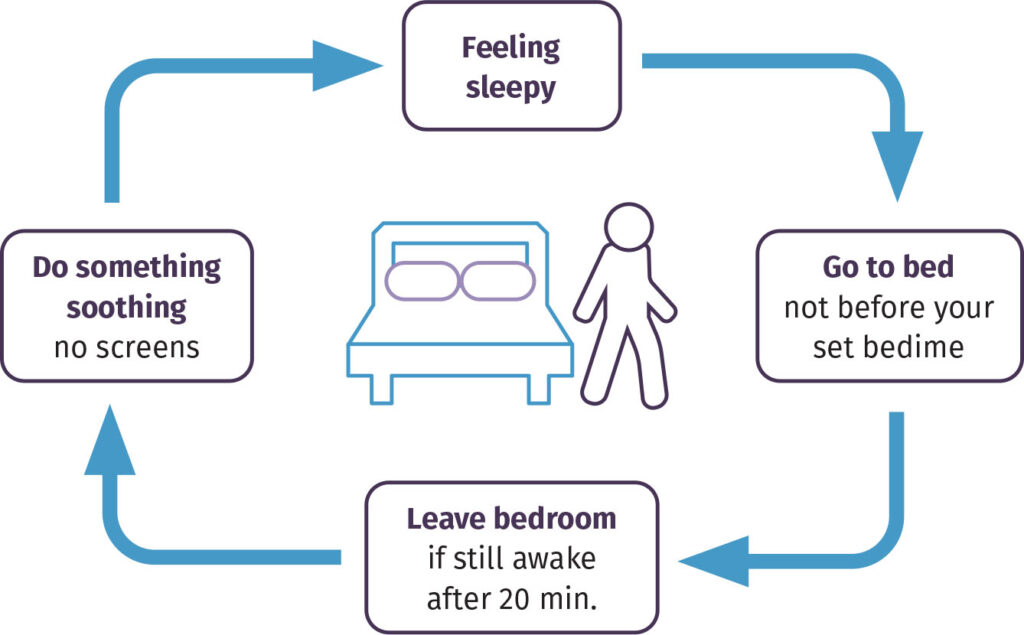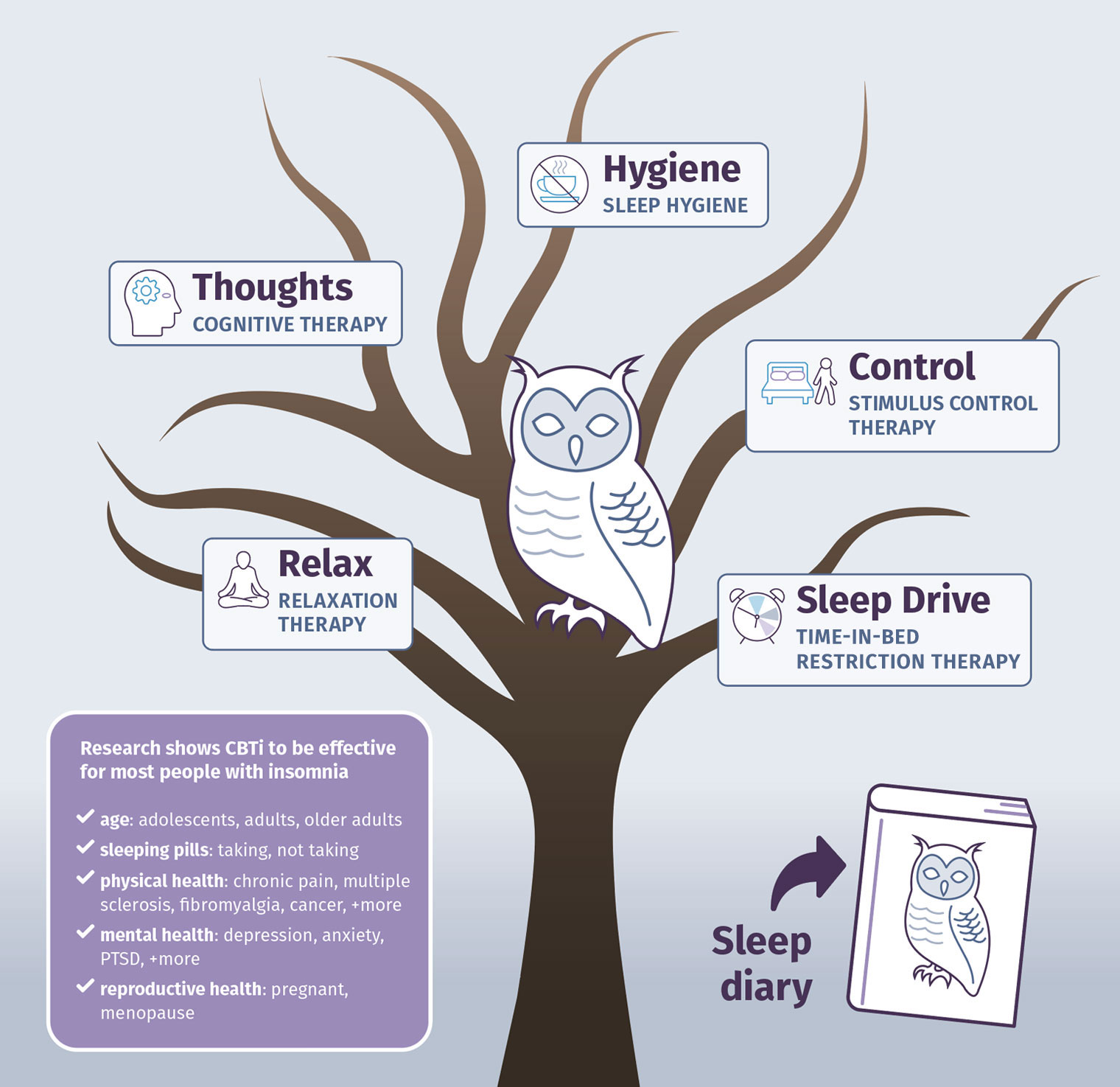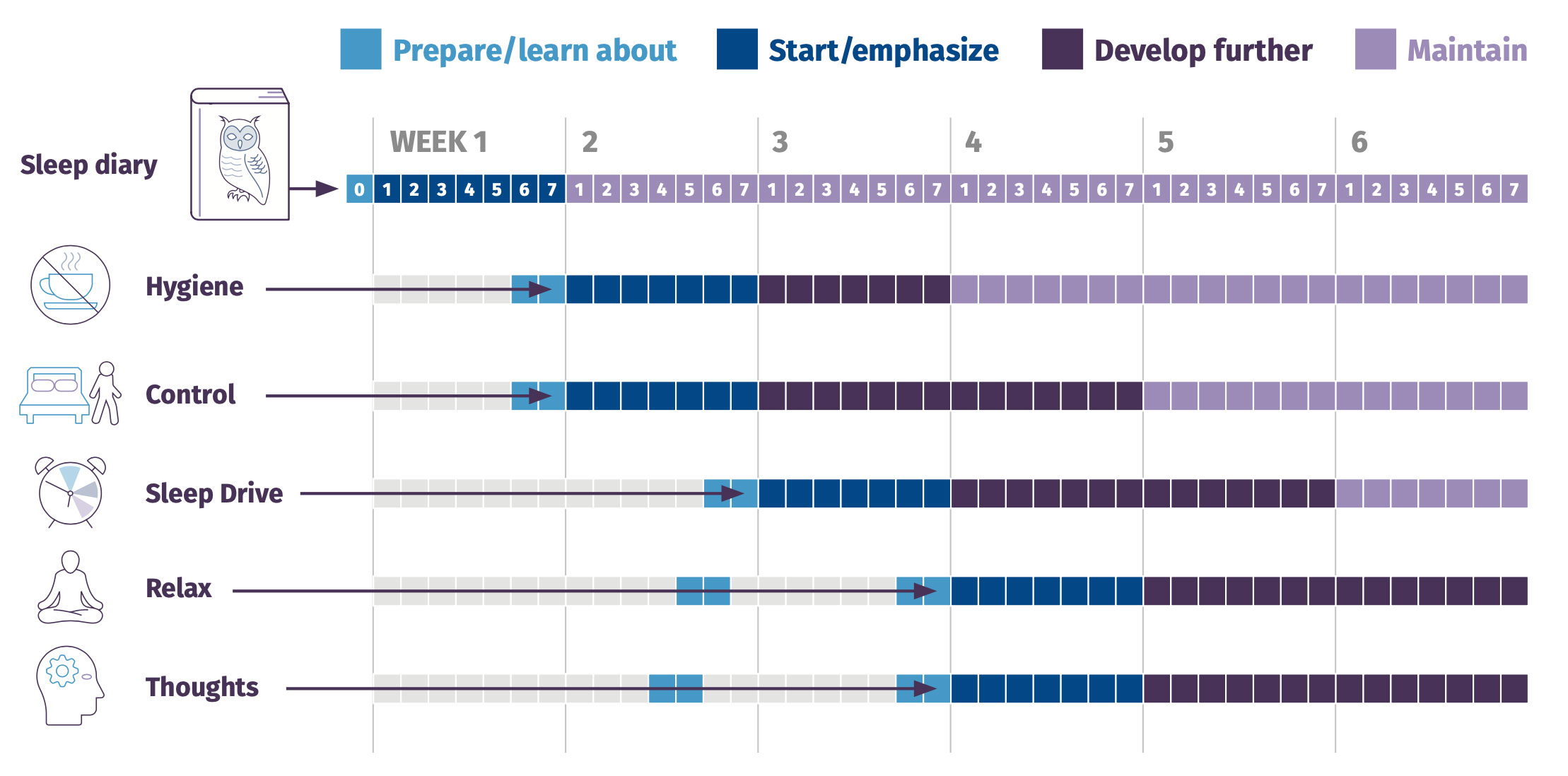Known as the time-in-bed components of CBTi, Control (stimulus control) and Sleep Drive (time-in-bed restriction) are the most effective components for getting your sleep back.
Control
By following a few rules, Control breaks the habit of lying in bed and feeling frustrated because you can’t sleep. The sleep rules are:
- Don’t go to bed before your set bedtime, even if you are feeling tired.
- Leave your bed and sleeping area if not asleep 20 minutes after turning off the lights.
- Return to bed only when sleepy.
- Repeat rules 2 and 3 after going back to bed or when waking during the night and lying in bed for another 20 minutes.
- In the morning, don’t stay in bed past your rise time.

Sleep Drive
With Sleep Drive, you make a sleep prescription that you adjust each week. Your sleep prescription includes a bedtime and a rise time, and a few rules to follow based on your sleep numbers. These sleep numbers are your time in bed, time in bed awake, and time in bed asleep. You use these numbers to calculate your sleep efficiency (the ratio between your time in bed asleep and your total time in bed). Your sleep efficiency is high when you spend most of your time sleeping between the time you get into bed and the time you rise the next morning to start your day. On the other hand, sleep efficiency is low if you spend a lot of time awake while in your bed. The target sleep efficiency is 85% to 95%.
Learn more about sleep numbers here.





 Most people with long-lasting periods of insomnia should use CBTi. It is effective for teens and adults of all ages with or without other health issues.
Most people with long-lasting periods of insomnia should use CBTi. It is effective for teens and adults of all ages with or without other health issues. Psychosis
Psychosis Not taking sleeping pills
Not taking sleeping pills